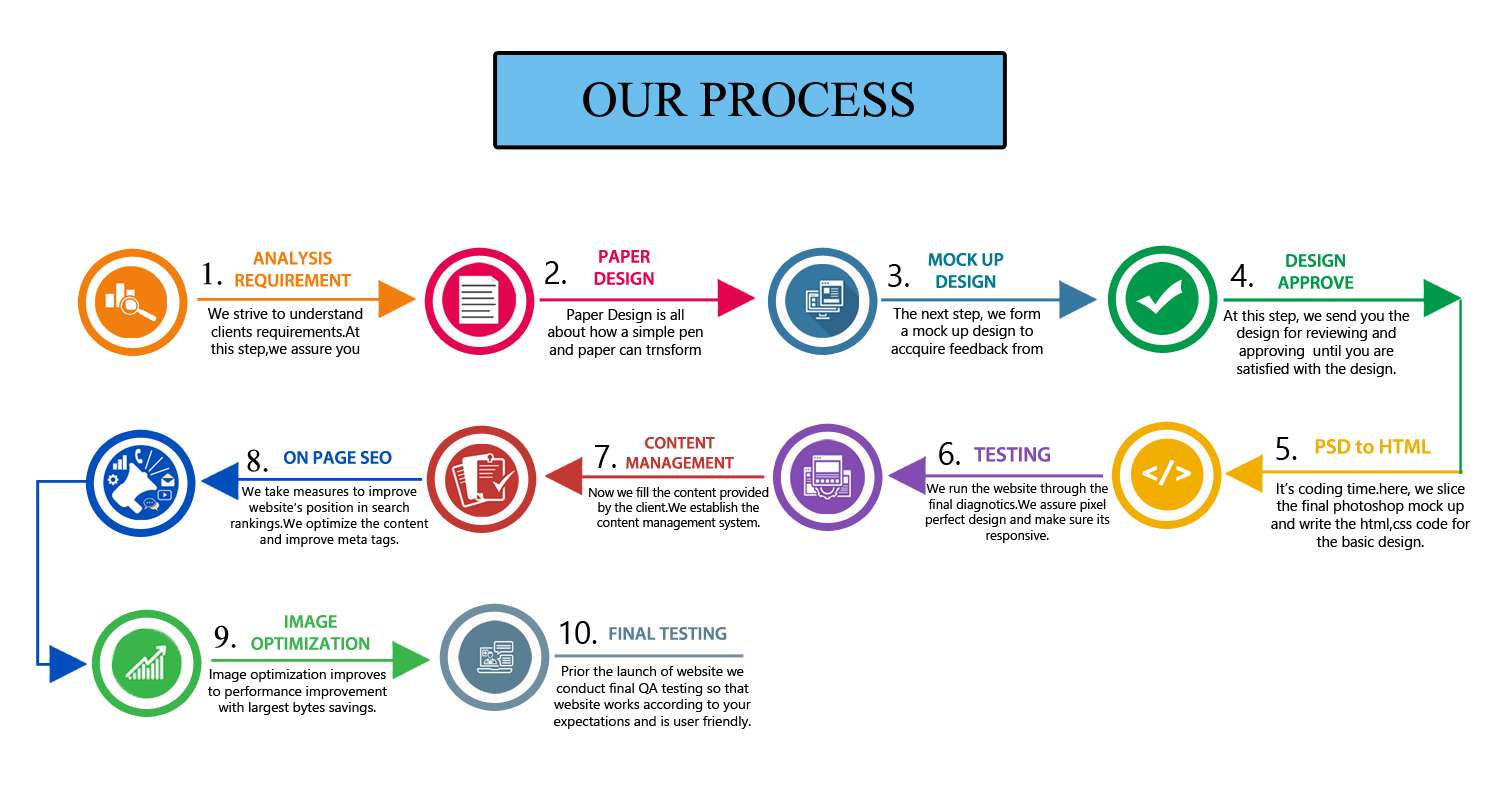


1. Discover: The foremost step in the 7D process is to find a vision for the project. The requirements are discussed, and thus designs are planned. The discussion during the stage includes setting the goal, choosing the target audience, thinking of the user experience, and brooding over the success factors of the project. The step consists of initial customer meetings, sharing the request for queries, requests for proposal, and demand for information. The plan takes shape after a few exchanges of design documents and service listing. This stage further sets the stage for a standard operating procedure.
2. Define: On top of the base that the Discover stage has prepared, a detailed analysis is carried out, and a plan begins to take shape. This stage takes the project forward to requirement specification and tentative plans of execution. The customer gets an idea of how the project will look visually and how it will handle the requirements functionally. With that, both the project manager and the customer see the project from the same viewpoint, and thus they land on the same page if they were not earlier. The customer, too, gets an idea of the result and can think of more or fewer features and capabilities.
The customer reads and signs the specification requirements document, and thus, the project team can take over to define their sprints and delivery schedules.
3. Design: This is the step where the project appears on the real-world computer from documents, power points, and excel sheets. A prototype is prepared as a proof of concept and is shared with the customer. The customer now sees a working model and can now see how well the solution is going to solve their problems and add capabilities to the existing setup.
The user experience team interacts with the project manager and customer representatives, the database team prepares a schema, and the quality analysis team rolls out their test cases. The define step, in simpler words, puts everything in one place and sees their alignment. The customer can see the holistic view and get a sense of competition.
4. Develop: With the entire design in place, the software engineers start writing code, and the database designers start creating databases and their tables. Since we use the agile methodology, at the end of every sprint, we demonstrate the developed features with QA and documentation complete. The sprint review seeks amendments, and then the team plans their next sprint based on the new or planned work. With every sprint, the real project keeps getting new features, and the customer keeps reviewing the sprint wise progress so that no one receives any surprise anytime.
5. Debug: Form unit tests to functional tests, the application is tested with all possible wrong data and out of scope scenarios. This exercise is aimed at breaking the app so that the issues can be identified early and fixed with the releases. While the 7D processes are in force, the testing is generally done by the internal testers, but then the customer also tries to help and report bugs. All these issues are prioritized and fixed by the developers.
6. Deploy: The deployment step installs the application for the customer as per their set up. Developers configure the customer system for the smooth execution of the application and install the app. The installation includes fixing any concerns, providing the customer with proper configuration documents, and explaining to them the best ways to utilize the application. This step also includes user acceptance testing, where they test the application as per the specifications signed earlier.
7. Dissect: This is the last step, but it runs as long as the application lasts. The customer users are given the training to use the application. They are also taught to take care of small issues and the capacity of the application. With the training material, the customer is now shifted to customer support from project development where the customer can raise a ticket, and then the development team fixes the same.